“I’m taking a ride with my best friend.”
— Depeche Mode, “Never Let Me Down Again”
Editor’s note: You’re reading Kotaku US’ Ep 1 TLOU recap. If you’d like to read Kotaku AU’s Ep 1 recap (complete with easter egg hunt), you can do so right over here. — David)
The first episode of HBO’s The Last of Us is finally here, and not unlike the early hours of the game it’s based on, this section largely serves as table-setting and prelude for the true heart of the story: Joel and Ellie’s long journey together. However, this is television, and there are some minor yet meaningful deviations from the game that shed light on how the people leading this adaptation — the game’s creative director Neil Druckmann and Chernobyl showrunner Craig Mazin — approached the task of adapting the story to a new medium.
If this recap seems on the long side, do note that this first episode, titled “When You’re Lost In the Darkness,” runs about 80 minutes. That gives us more ground to cover than a typical recap will, and this opening section is particularly full of minor but interesting differences from the game that I want to touch on. (I’m replaying the game alongside my watch of the series to help refresh my memory, and note spots of particularly interesting contrast and departure.) Also, this is an episode recap, so this should go without saying but just in case: spoilers ahead for the first episode of The Last of Us.

While the game begins by thrusting us right into the heartbreaking chaos of Outbreak Day, here we begin with a talk show segment from 1968. In some ways, this scene strikes me as designed to unnerve the contemporary viewer, living in a world wracked by covid. A scientist speaks about how, because of air travel, viruses can spread around the globe with unprecedented speed and, as if to drive home the relevance to us, he places special emphasis on the word “pandemic.” “‘Pan,’ meaning all, the whole world becomes sick all at once,” he says.
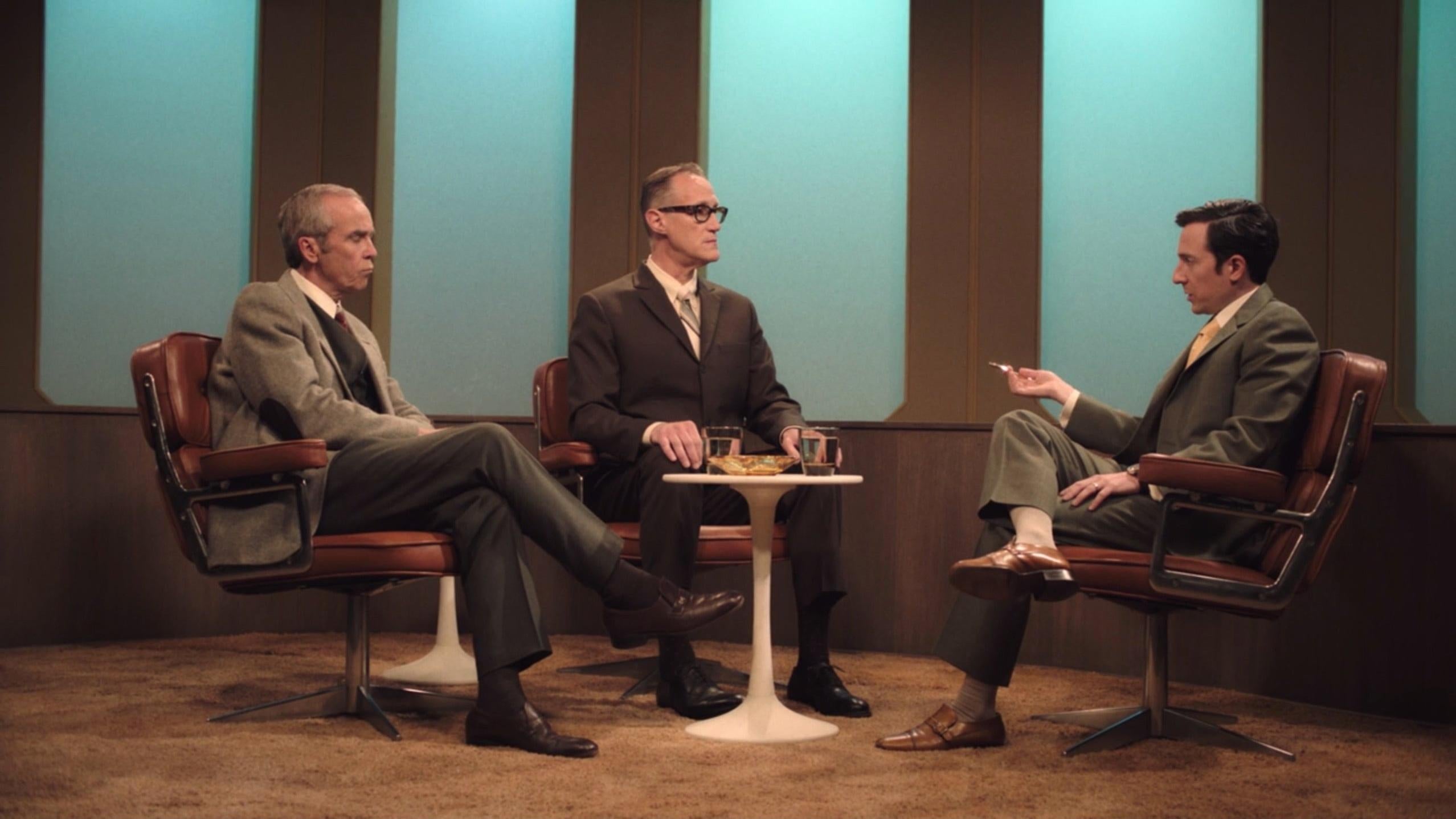
But viruses are old hat. The show’s host turns to another scientist, Dr. Newman (played by John Hannah of the Mummy films), who seems unperturbed by the idea of a viral pandemic. No, it’s the threat of a fungal disease ravaging humankind that keeps him up at night. When he gives voice to this idea, the audience snickers, but they’re not laughing for long. “Viruses can make us ill, but fungi can alter our very minds,” he says ominously, before describing in horrifying detail the Ophiocordyceps unilateralis infection in ants.
The other scientist, Dr. Schoenheiss, dismisses the idea that fungus could ever pose a threat to humans in this way because fungi can’t survive in beings as internally warm as humans. But then, Dr. Newman floats another idea that may seem like doom-and-gloom fantasy to the people watching in 1968, but could make the modern viewer’s hair stand on end: “What if, for instance, the world were to get slightly warmer?” he says. Such conditions, he suggests, could make fungi evolve to survive in warmer temperatures, making them capable of surviving even in human hosts. Any one of a number of fungus, he theorizes, “could become capable of burrowing into our brains and taking control, not of millions of us, but billions of us.” Such an infection would, he says, be utterly incurable. If it happens, he says with smug resignation, “we lose.” Well, fuck.
The show then launches into its striking opening credits sequence in which strands of fungal growth spread like highways and, here and there, sprout up like skyscrapers. Near the end, two shapes emerge, vaguely human in outline, one larger and one smaller, a clear evocation of Joel and Ellie.
We jump ahead to 2003 for Outbreak Day, which marks a notable change from the timeline of the games. In that timeline, the outbreak occurs in 2013, and the main events of the game take place 20 years later, in 2033 and 2034. Here, the 20-year leap that follows Outbreak Day situates us smack dab in 2023, albeit a version of it that looks very different from the one we’re living in right now.
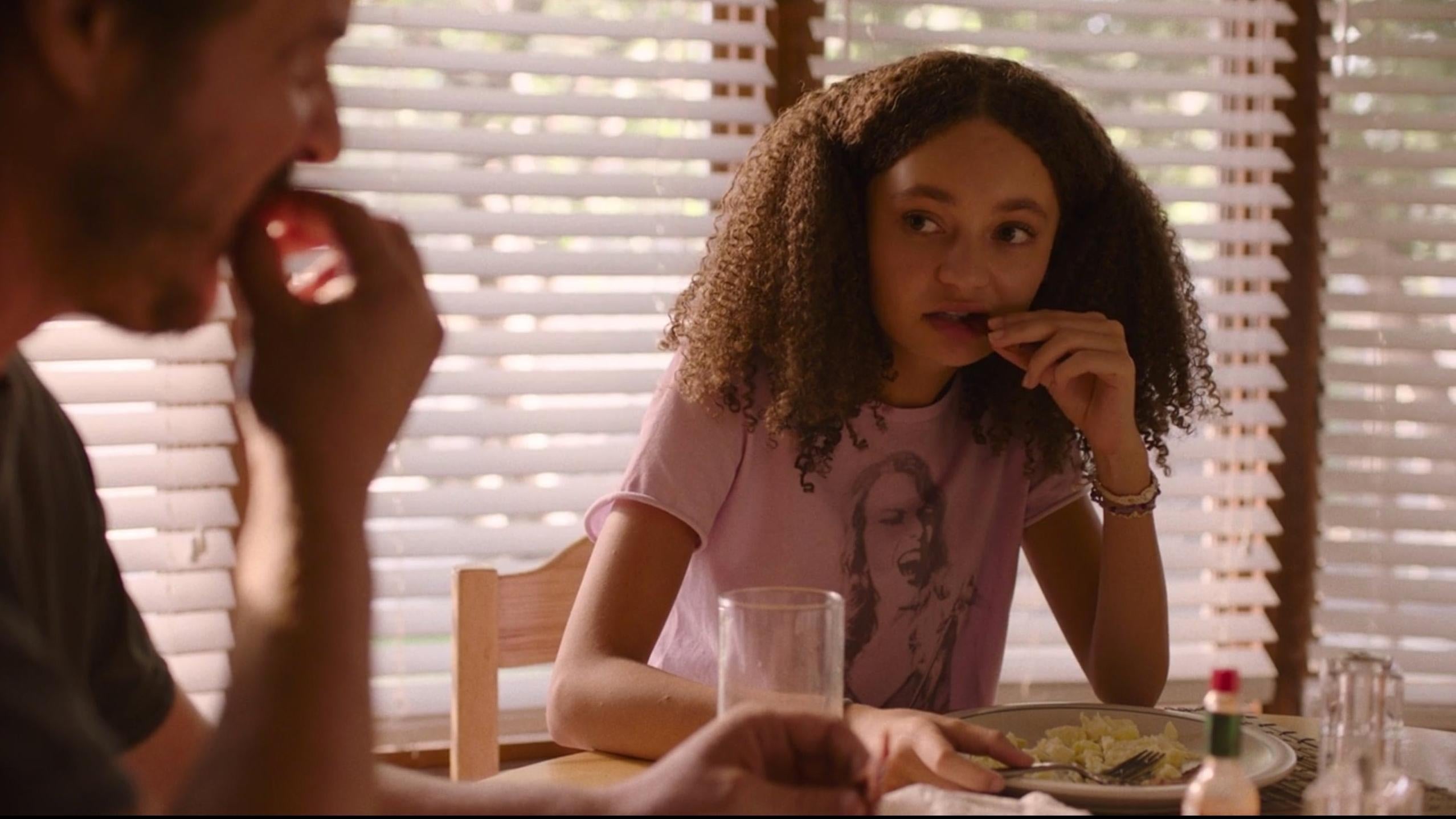
But first things first. We fade in on a shot of light streaming in through a window, a clear nod to the image seen on the start screen of the game. A girl wakes up on a normal day, not knowing it will be her last. She wakes up her dad who’s sleeping through his alarm, and makes breakfast in the kitchen. This is, of course, Sarah (Nico Parker), wearing the same t-shirt for a fictional band called Halican Drops that she wears in the game.
Our first impression of Joel (Pedro Pascal) involves him asking her, as an obvious afterthought, “You get your, uhh, homework done?” She looks at him like, “Are you for real?” A moment later, with perfect comic timing, he says “Fractions?” It gets a laugh out of her, and of me. Almost immediately, we understand the kind of relationship these two have, and Pascal’s inherent warmth and funniness establishes itself as a presence in Joel, even if it’s an aspect of his personality that tragedy is about to drive out of him. It’s a refreshing and effective departure from our introduction to him in the game, which establishes their bond but less so any warmth Joel may possess.
A news bulletin on the radio makes vague mention of “disturbances in Jakarta,” a place whose location and significance neither Joel nor his freshly arrived brother Tommy (Gabriel Luna) can identify. (I’ll be saying more about this seemingly throwaway little detail next week, for…reasons.) Sarah precociously informs them that it’s the capital of Indonesia, but none of them bother to take heed of what the nature of that unrest in Indonesia might be. They’ve got their own lives to think about, work and school and telling Joel to bring home a cake tonight so they can properly celebrate his birthday.
An Operation Desert Storm Combat Veteran bumper sticker on Tommy’s truck and a smiling photo of George W. Bush in Sarah’s classroom further establish the early 2000s timeline. Sarah’s teacher drones on about sentence structure and grammar basics in the most crushingly normal way imaginable, but the emphasised cough of a classmate on the soundtrack contributes to a growing feeling of unease. “I swear you will use this later in life,” the teacher says, but we know that, in Sarah’s case, that’s sadly not true.

I think the entire prologue speaks to the ways in which telling a story on TV is fundamentally different from doing so in a game. From start to finish, the game is more tightly focused on its central characters, and in the game’s prologue, Joel and Sarah’s house is the stage for all of the storytelling that takes place before they make their desperate attempt to escape. It’s a manageable space for the game’s developers to create and work with, and the game uses it brilliantly. You explore a bit, finding things like a birthday card Sarah made for Joel, and in one very effective moment, a news broadcast is interrupted by an explosion which Sarah simultaneously sees occur out the window in the distance.
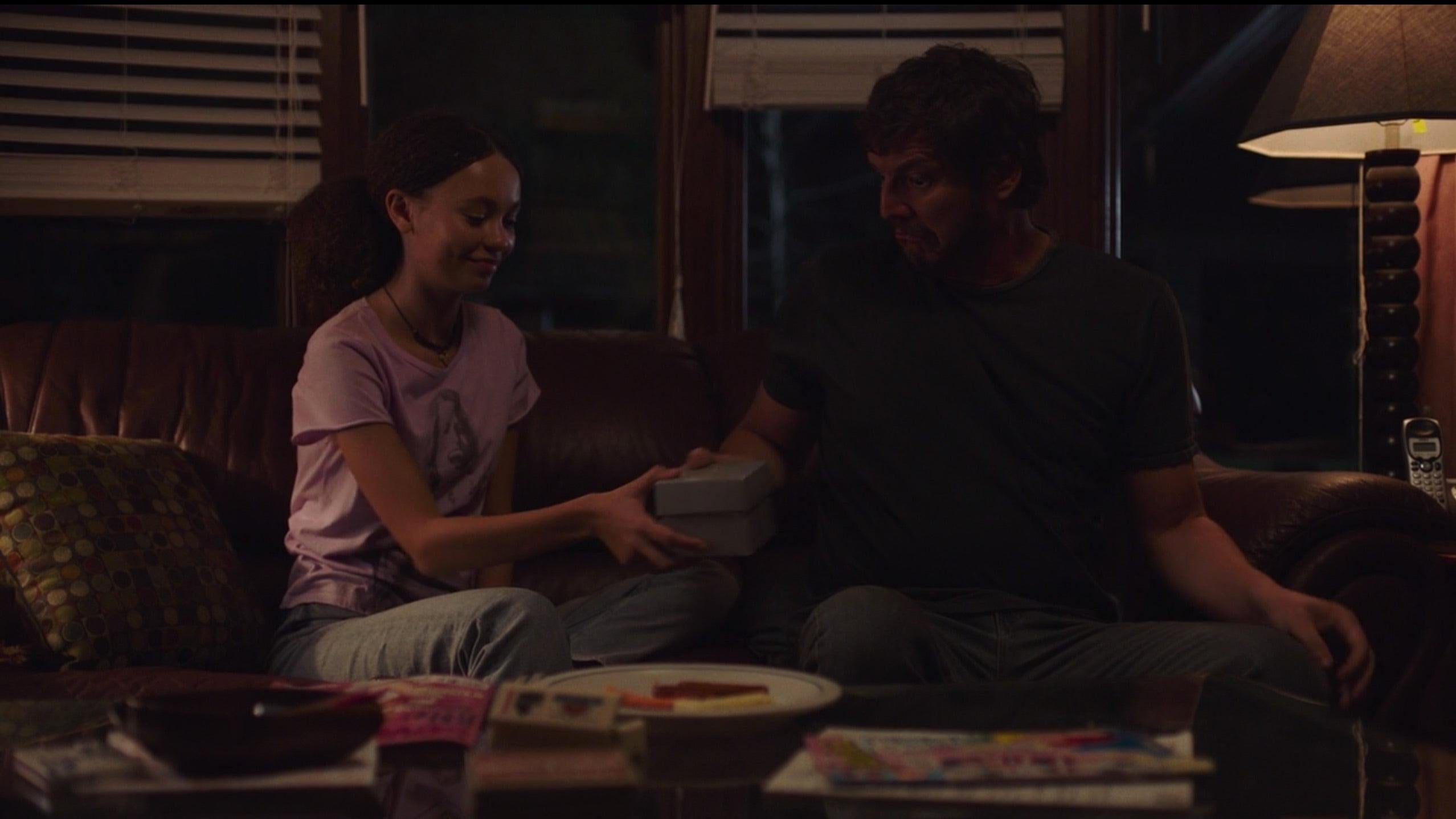
The show lacks the immediacy that the interactivity of such moments creates, but gains something of its own by being able to take a broader perspective. We follow Sarah as she takes the bus into downtown Austin after school to get Joel’s watch repaired as a birthday gift. The tension continues to build as police vehicles and fire trucks speed by the repair shop, and a woman comes out of the back to say in a panic that the shop is closing early, that Sarah should go home. With moments like this, the show is setting our expectations for a story that tries to let the wider world in, to more significantly go beyond just the core cast and expand our perspective on the story it’s telling.
Joel and Sarah get enough time together that night for her to give him the gift of the watch — here a repaired keepsake as opposed to the brand-new watch it is in the game — and, as in the game, Sarah jokes that she got the money for it from “Drugs. I sell hardcore drugs.” Soon, though, Joel has to go bail Tommy out of jail and Sarah wakes up alone in the middle of the night to heightened unrest: helicopters, the neighbour’s dog losing it, general pandemonium.
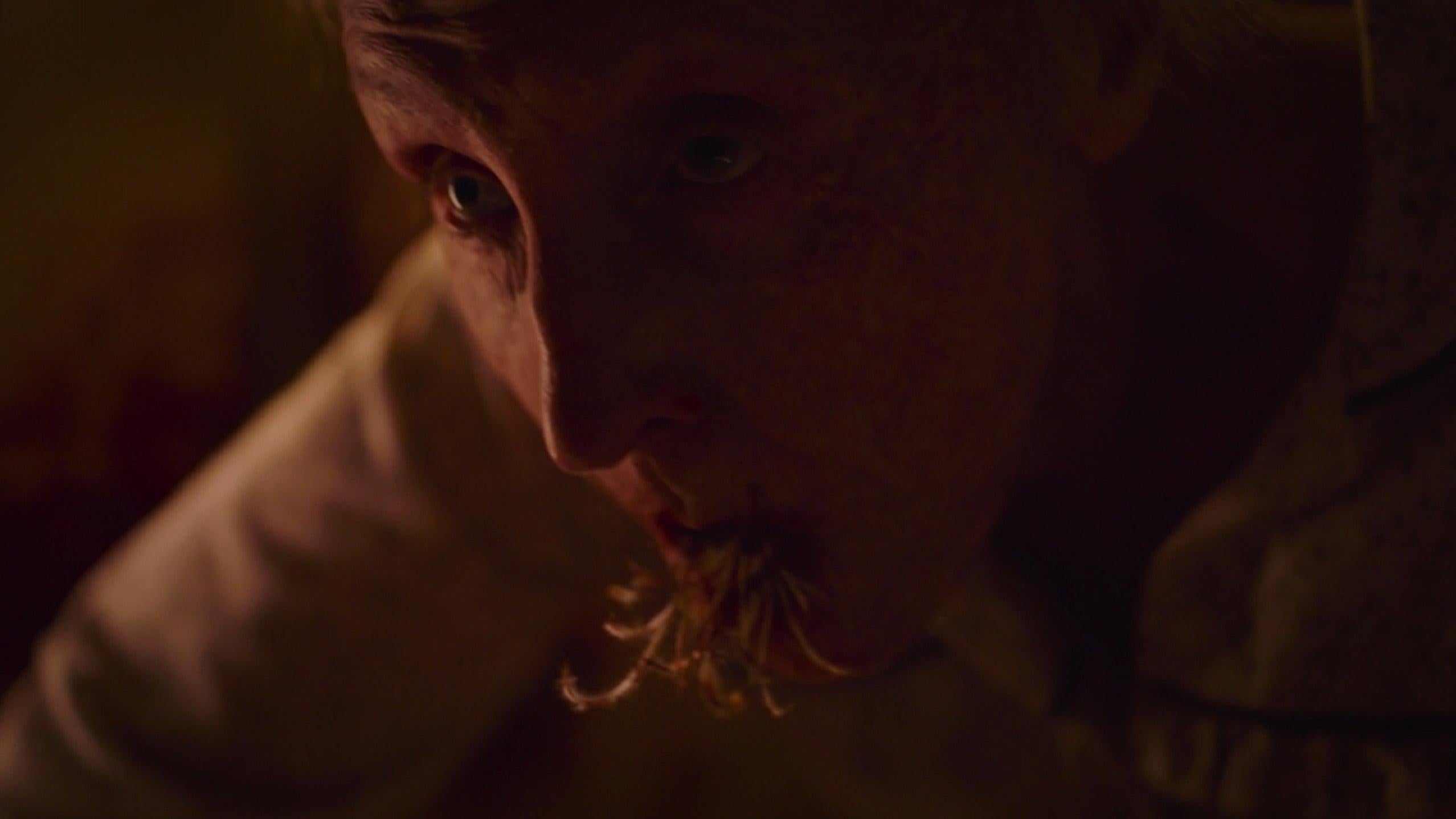
Now we get our first glimpse of the real threat: the docile, elderly woman next door, who earlier in the day we saw convulse frighteningly, has strange fungal strands protruding from her mouth and is on a mindless, bloody rampage. (I’m fairly sure that oral protrusion is something created entirely for the series, and is meant to be the mechanism by which the disease transmits itself from one host to another when bites occur. Remember this image, as it’s deployed again next week in ways we’ll definitely be talking about.)
Joel and Tommy pull up just in time to save Sarah from the threat of elderly, infected Grandma Adler, but it’s out of the frying pan and into the fire as they try to get the hell out of Austin. In a question reflective of the American psyche of the period, and reminiscent of a moment in Steven Spielberg’s great post 9-11 version of War of the Worlds, Sarah asks, “Is [the infection] from terrorists?”
The sequence that follows takes many cues from that in the game. A burning farmhouse is indicative of the chaos to come. A family with a kid begs Tommy and Joel to stop but Joel urges Tommy to keep going. “Someone else’ll come along,” both Joels say, though Pascal’s version gives the line a quality that says even he knows he’s lying to himself.
Soon, the three find themselves trapped by stationary vehicles and crowds of panicking people, and while in the game their truck is sideswiped by another vehicle, the show ramps up the explosiveness of the moment by having a jumbo jet plummet nearby, hurtling wreckage that flips the truck and leaves Sarah injured. Carrying her in his arms, Joel darts through an empty diner while pursued by a very fast-moving infected, further helping to establish the terrifying dangers of the new world our characters suddenly find themselves in. A soldier shoots the infected and saves them, but, of course, infected aren’t the only threat here. Institutions are, too. After a distressing order from his commanding officer, the soldier opens fire.
Everyone who’s played the game knows how this ends.
TWENTY YEARS LATER
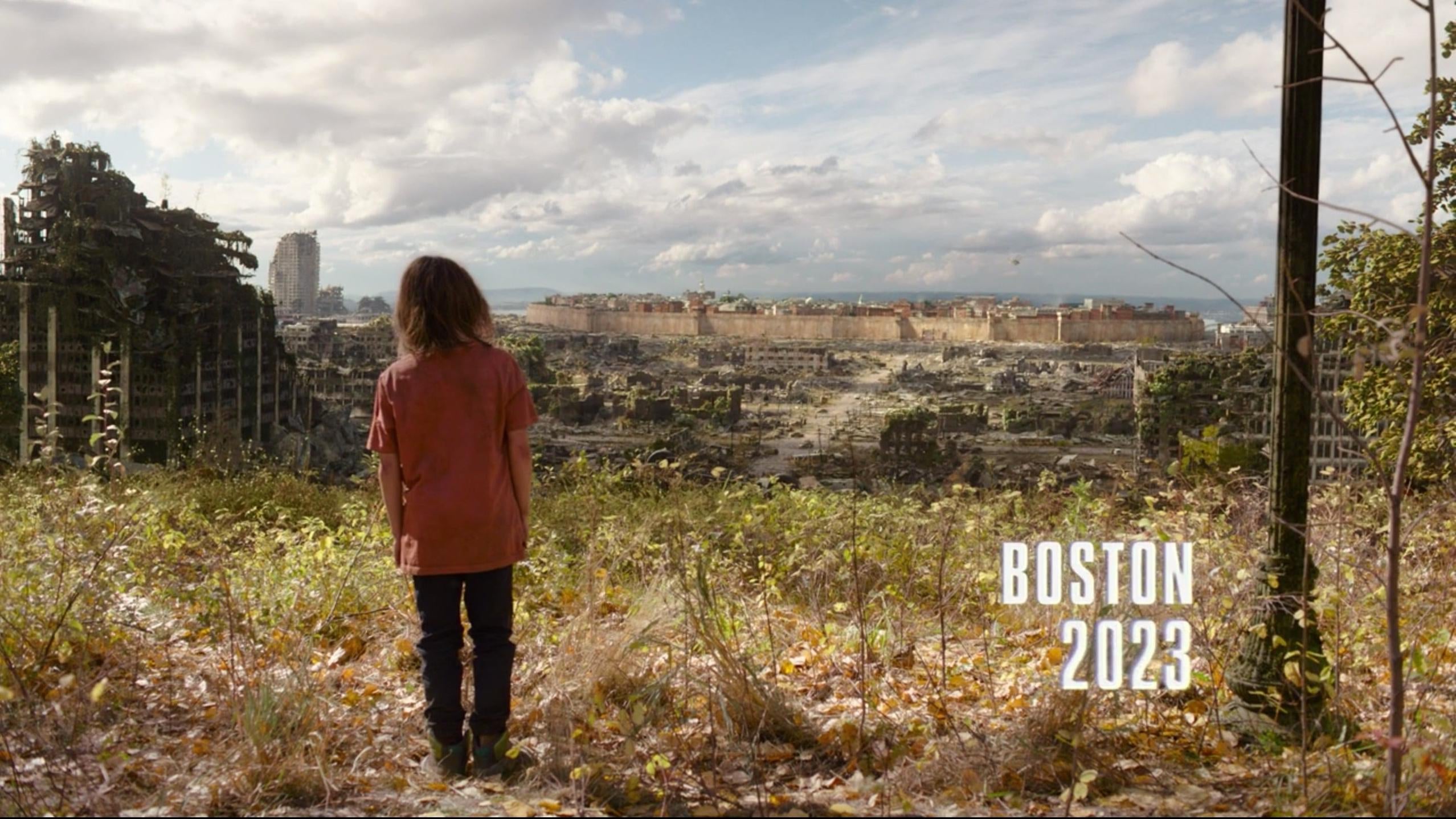
Once again, while the game is anchored to the characters we play, the show wisely uses its untethered perspective to inform our understanding of what the world is like, 20 years after Outbreak Day. The first person we follow after the jump isn’t Joel or anyone else known to us, but a young child, ragged and stumbling. The poor boy looks out on a decimated Boston and collapses in sight of a FEDRA quarantine zone. He’s wheeled into a makeshift hospital where signs on the wall give viewers some important contextual information about how the infection works, that we can file away in the back of our minds for the moments when it becomes relevant: an infecting wound on the leg or foot will result in full-blown infection in 12-24 hours; one in the torso or arm area 2-8 hours, and one on the head a mere 5-15 minutes. It’s a smart way to convey important details to viewers organically, without the need for clunky expository dialogue.
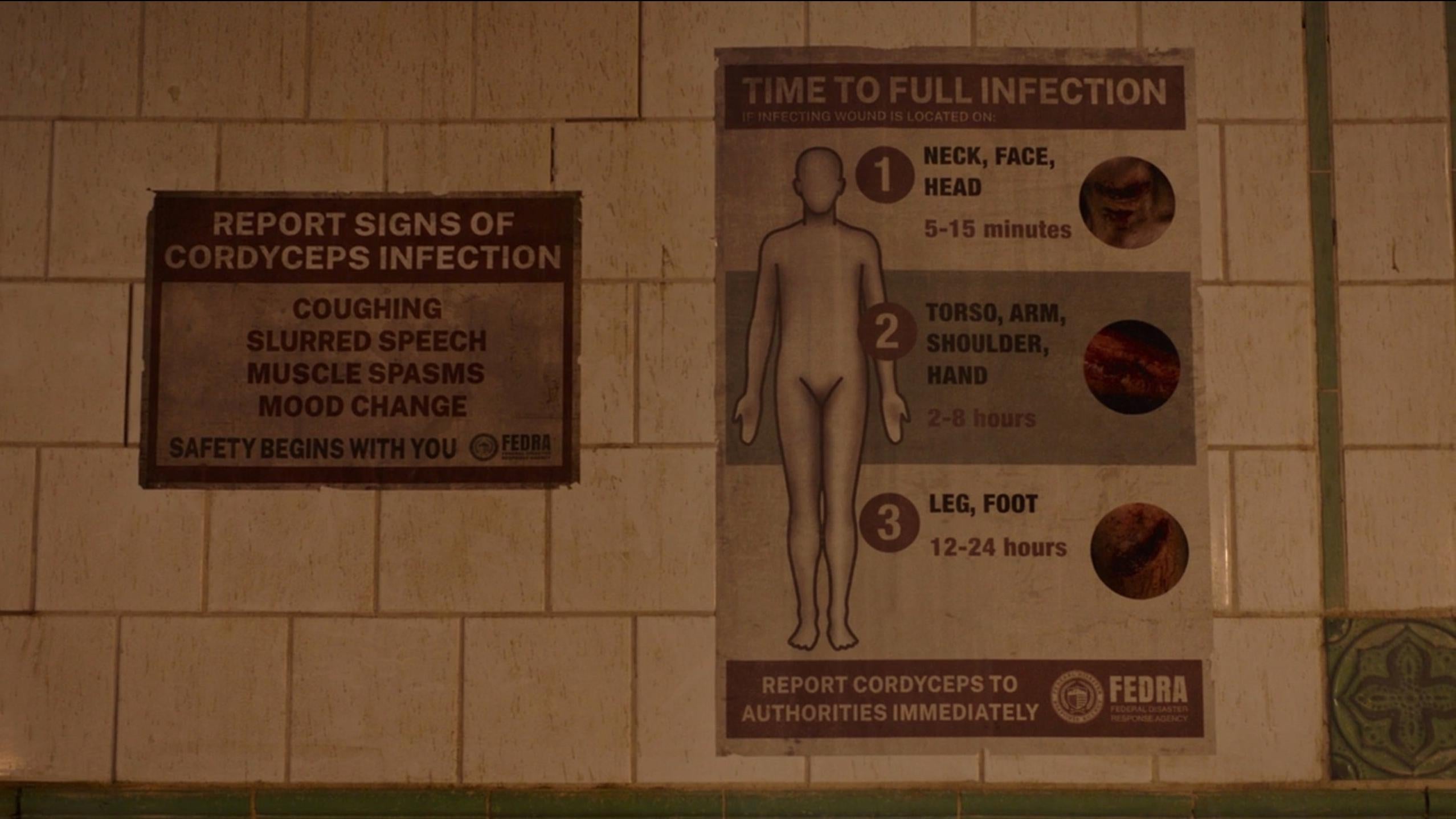
The scene also performs another bit of important table-setting. As a kindly officer talks to the boy, another presses a device against his neck, and then shows that the screen is red. The officer tells the boy that they’re gonna give him some medicine and then get him some new clothes, some delicious food, and all the toys he could hope to play with. It all sounds too good to be true, and of course, it is — nothing but a small kindness to send the boy off with happy thoughts. The injection that comes isn’t medicine, but death. The red screen meant infection — something we need to know for a future visual to land — and the death of this helpless child establishes just how brutal life in this world can be.
A grim world demands grim work, and that’s exactly what Joel is doing when we find him again, tossing bodies of infected dead on a pyre. Seeing the euthanised child, the woman he’s working with says she can’t bring herself to do what must be done. But Joel can. The game tries to illuminate the kinds of lean, miserable existences people carve out in the QZ while following Joel and Tess on their quest to get their guns back from a criminal named Robert, but the show takes time to do more, depicting just what the awful business of maintaining the QZ demands.
Before Tess is introduced, we see shoelaces being traded for ration cards and people painting over Firefly graffiti (though in the show, we don’t yet know what the Fireflies are), while Joel walks past a public execution to secretly meet up with a FEDRA officer in a small expansion of the game’s narrative. They have an arrangement: the officer gives Joel ration cards, Joel gives the officer pills. The officer warns him that the Fireflies — apparently some kind of insurgent organisation — are causing trouble at night and he’d be safer staying off the streets.
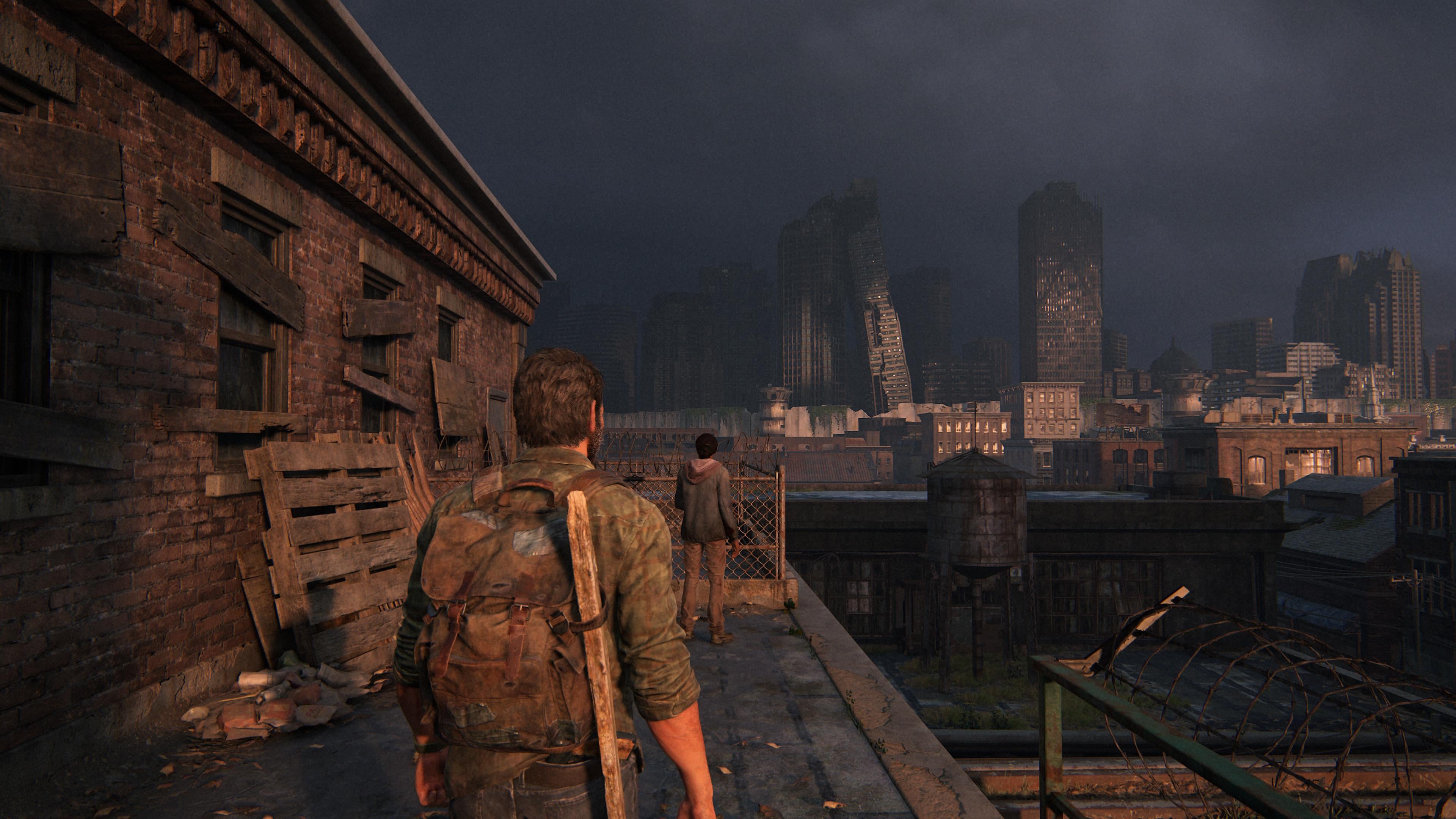
Now, we meet Tess (an outstanding Anna Torv), Joel’s smuggling partner, and learn of another small but significant shift from the game. Tess, freshly beat up, is talking to Robert: in the game he betrays the duo over some guns, but here, it’s over a truck battery. The scene establishes that, in the QZ’s underground dealings, Joel is a force to be feared, as Robert worries that Joel will be on the warpath after seeing how Tess has been treated. In the game, when Tess and Joel meet Robert, they absolutely brutalise him, breaking his bones to torture him for information before executing him, point blank.
Such brutality so early on from our protagonist, however, would have been quite different in a TV show than in a game, and so the series opts to infer that Joel scares the hell out of people without immediately showing us why. (Don’t worry, we’ll still see plenty of his violent side before all is said and done.) Just before Robert is about to let Tess go, an explosion on the street outside blasts a hole in the wall, and Tess escapes to find herself in the midst of a shootout between FEDRA officers and Fireflies.
And now, just over 45 minutes in, at last we meet Ellie (Bella Ramsey), in a situation that marks another significant tonal departure from the game. In the game, when we first see Ellie, she and Firefly leader Marlene (Merle Dandridge) have something of a bond, with Ellie showing concern for the injured Marlene and professing that she’d rather stay with her than go on the cross-country journey without her. Here, Ellie’s a prisoner. Marlene and the Fireflies have her chained up in an empty house, and when a Firefly asks Ellie to count slowly from one to ten to make sure her mind is still functioning properly and not ravaged by infection, she ends her count with a middle finger and a “Fuck you.” Teens, amirite?
Meanwhile, Joel visits a man who makes radio contact with far-flung family members of QZ residents, passing messages back and forth, and here we learn that Joel’s motivations are altogether different than they are in the game. There, what sets his quest in motion is a desire to recover the guns from Marlene that Robert betrayed him and Tess over. Here, we learn that Tommy’s gone silent in Wyoming, not having sent a message in three weeks, and Joel needs the truck battery to go looking for him. This seems like another shift designed to make Joel more approachable to viewers, and to establish that nothing is more important to him than family. The radio man looks at Joel in disbelief at the suggestion that he’s going to head for Wyoming to look for him. “There are worse things than infected out there…there are raiders, there are slavers.”
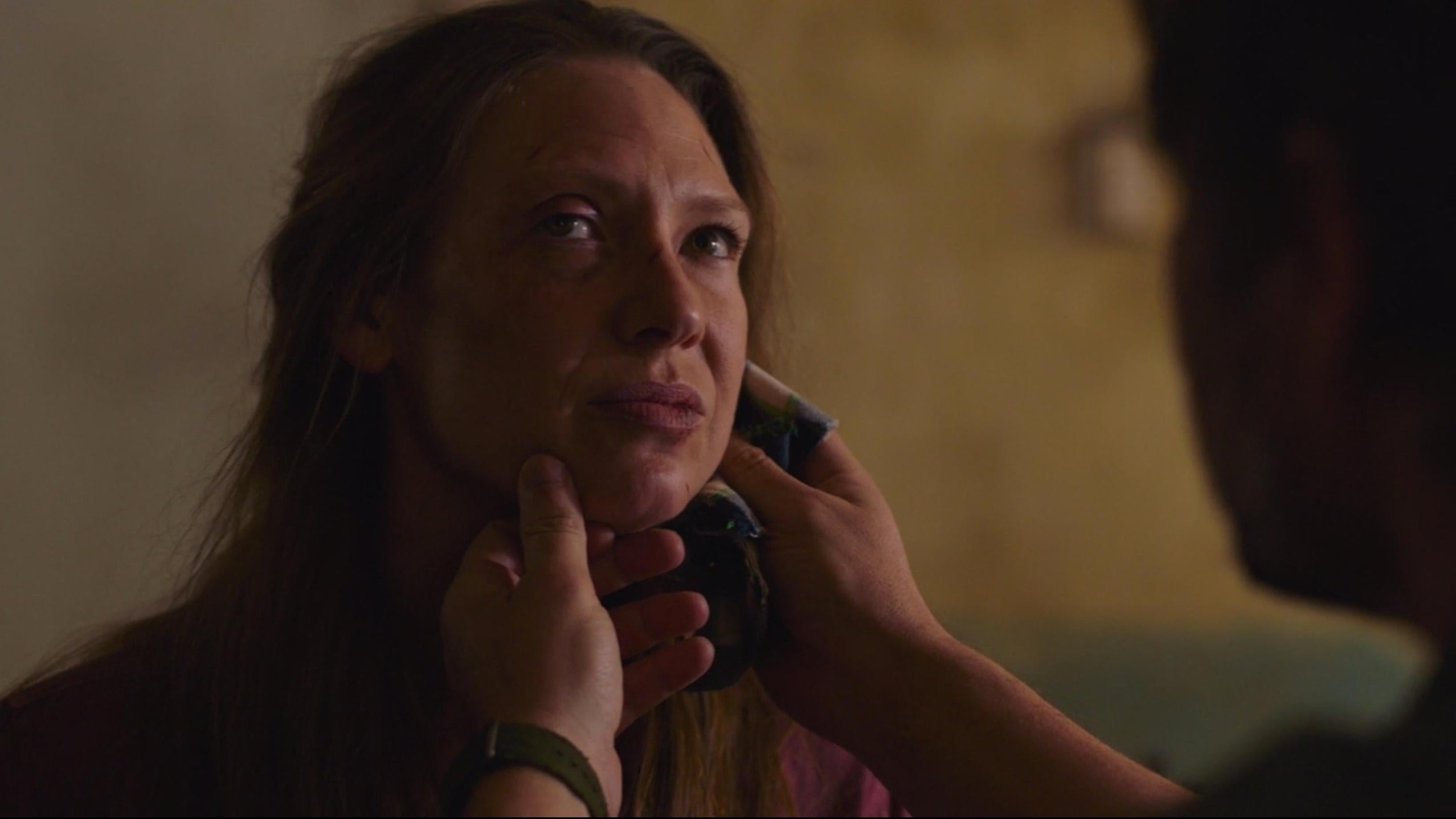
Joel is, of course, undeterred, and heads back to his apartment where he rummages under some floorboards for an old atlas, and begins planning his route, accompanied by pills and shots of hard liquor. It’s here, for the first time, that we see he still wears the watch Sarah had fixed for him, its glass cracked by a bullet. Soon he plunges onto the bed for a fitful sleep, interrupted by Tess coming home and putting her arms around him in the dark, suggesting that the arrangement they have involves more than just being business partners. The next morning, Tess tells Joel that Robert sold their battery to someone else. Joel, angry and worried about Tommy, wants blood, but Tess seems to have some power to rein him in. “Robert is terrified of you,” she says, “so you march out of here all Clint Eastwood, he’s gonna get wind of it and skip. I need you to take a breath.” They set out to quietly “hunt that motherfucker down,” recover the battery, and go find Tommy.
At the Fireflies’ HQ, tension is brewing, and one member confronts Marlene over why they’re risking their lives to attack FEDRA throughout the QZ. Marlene lets her in on a secret: they’re about to skip town with that mysterious teen in tow and head west. Ellie’s significance isn’t spoken aloud, but the other Firefly is left awed by a message Marlene hands her on a piece of paper and replies, “Whatever you need, whatever it takes. We’ll get her where she needs to go.”
Tess bribes a guy with ration cards for information on Robert’s whereabouts, while a brief scene gives us a glimpse of the Fireflies’ recruitment efforts, as someone sidles up to Joel and says, “If you’re feelin’ lost…” Before he can finish his pitch, Joel says, “You tell me to look for the light and I’ll break your jaw,” which quickly sends the would-be proselytizer on his way. I like that the show tries to give us a better idea of how the Fireflies actually function; in the game, we’re left to infer a good deal about just what their whole deal is and what kind of operation they’re running.
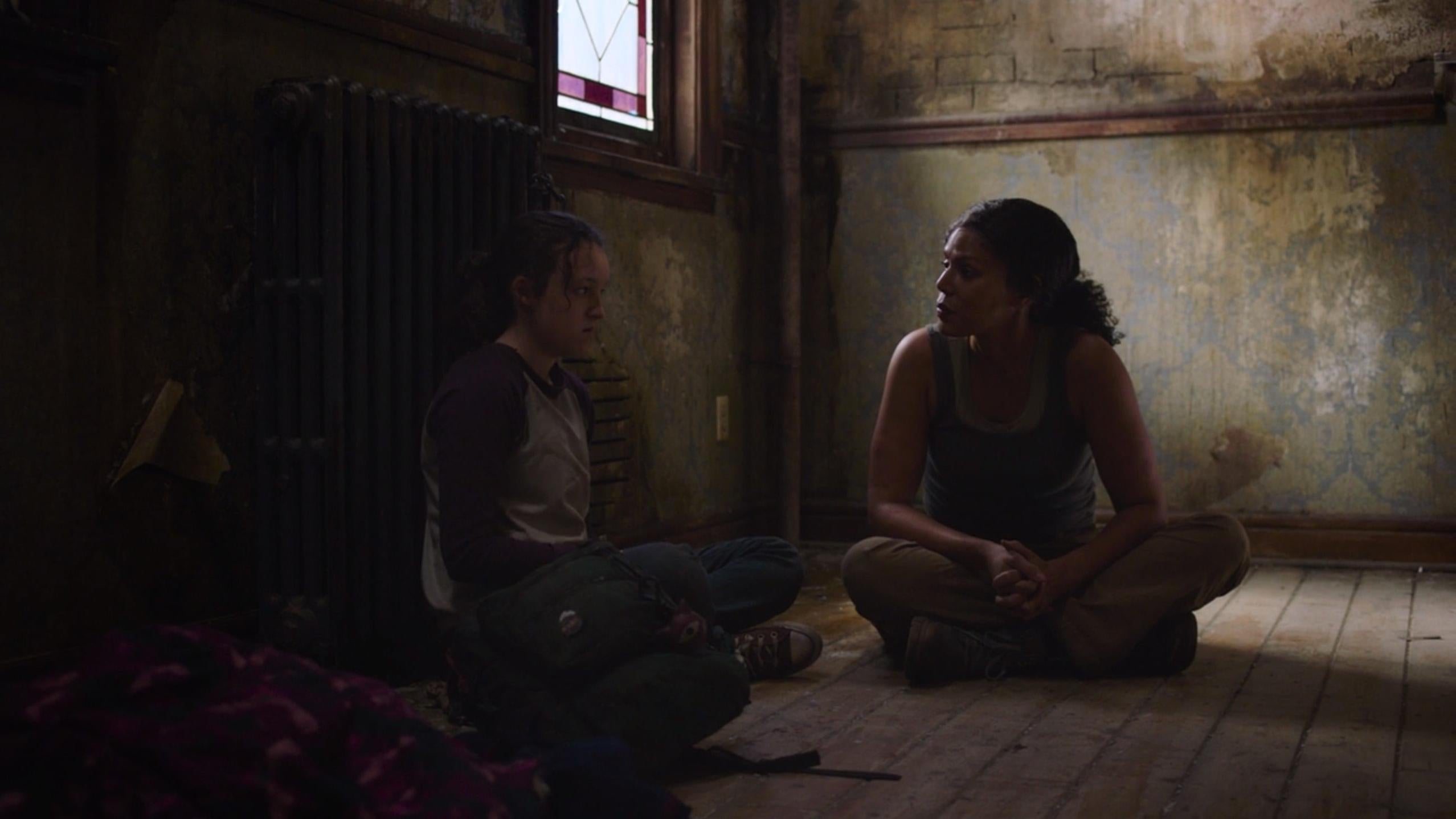
A conversation between Ellie and Marlene fills in some important backstory, and plants seeds for revelations yet to come. Releasing her from her chains at last and satisfied that she isn’t going to turn infected, Marlene tells Ellie that it was she who placed her in the FEDRA school where she’s grown up. When Ellie asks why terrorists would place her with FEDRA, Marlene retorts, “Was Riley a terrorist?” The mention of this name nearly moves Ellie to tears, but it may be some time yet before series viewers learn just who Riley is.
While the game’s versions of Joel and Tess have to shoot, sneak, and shiv their way through many dudes to get to Robert, the greatest scare this TV pair must face is the body of a man, fully integrated into a wall by fungal growth. And rather than needing to torture Robert for information, when they find him, he’s already dead, a useless battery next to him. Nearby, they encounter Marlene, who Tess describes as “the Che Guevara of Boston,” and Ellie with her.
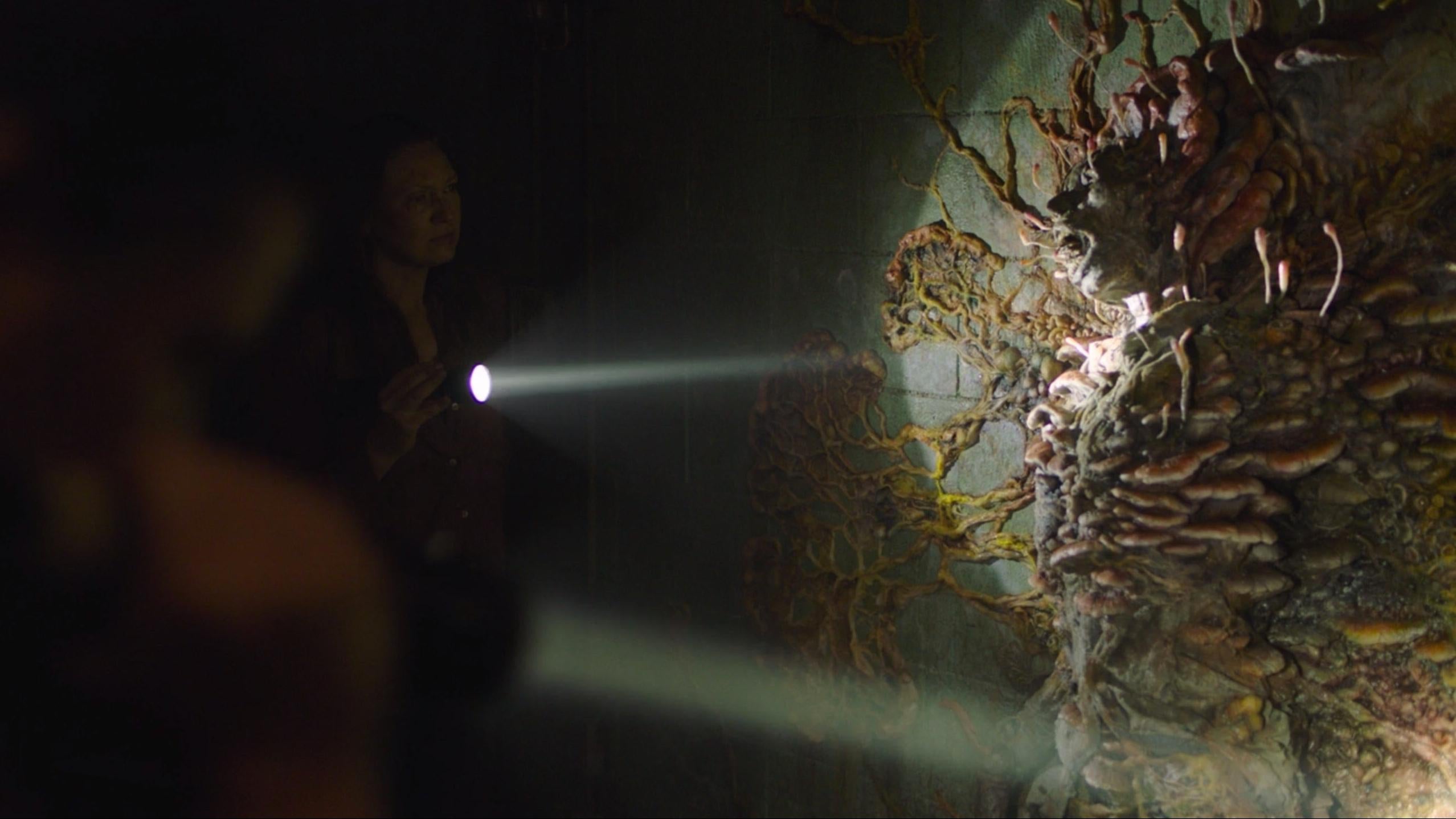
Though the circumstances that brought the two groups to this point are quite different than in the game, the reckless fierceness Ellie displays on her first encounter with Joel, coming at him with a knife to protect Marlene, is very similar, as is the dealmaking that ensues. Marlene’s been injured in the firefight with Robert’s guys and can’t travel with Ellie to the rendezvous point at the statehouse. If Tess and Joel can get her there, Marlene promises a fuelled-up truck, guns, and whatever supplies they need to go look for Tommy. Joel, wary of connection and the pain that can come with it, tries to avoid the arrangement, protesting that he and Tess don’t smuggle people. But before you know it, a deal’s been struck, and the two head out with a teen in tow.
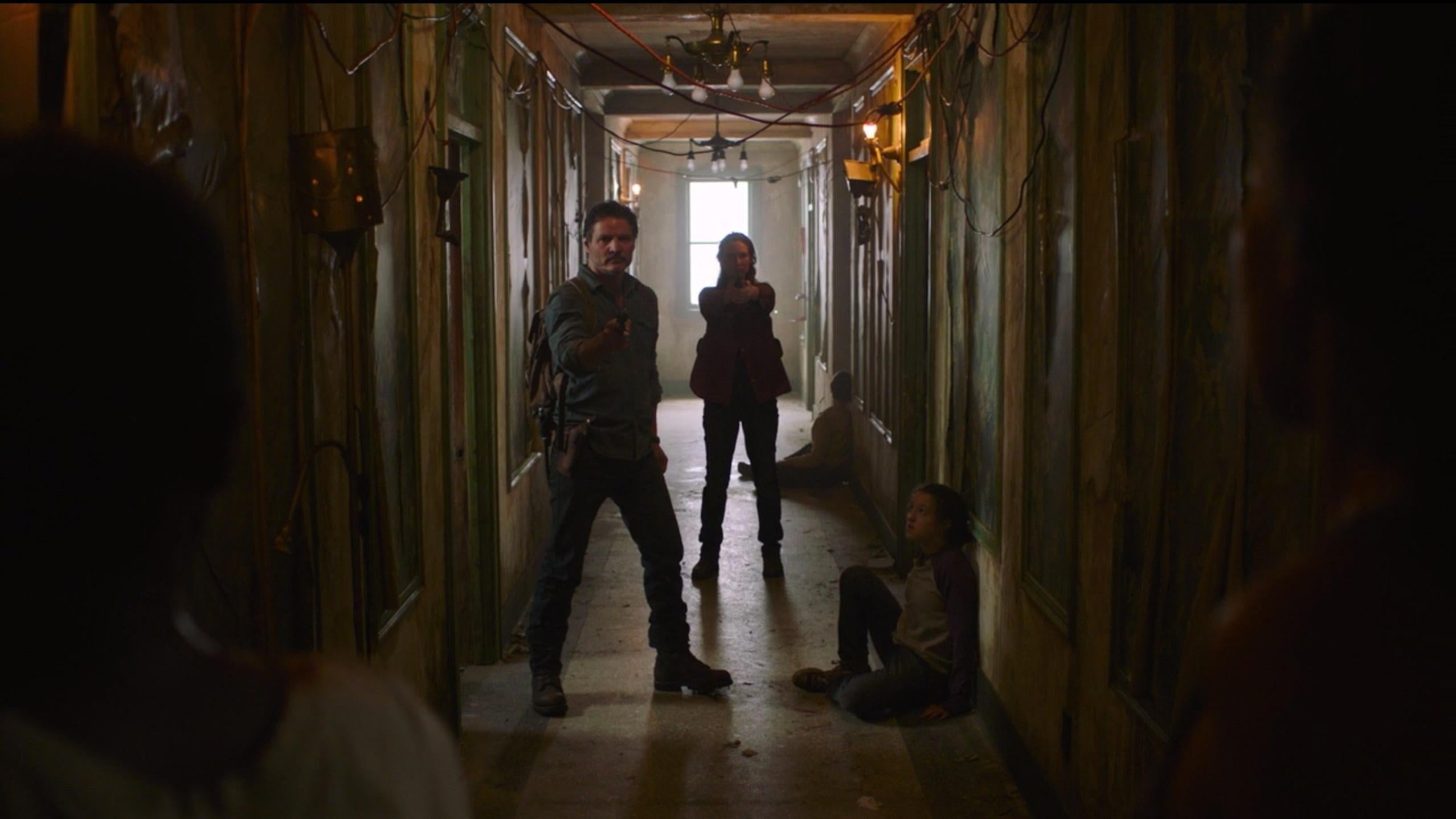
Back at Joel’s apartment, Ellie pokes around while Joel and Tess talk, quietly making mention of possibly visiting “Bill and Frank’s.” Ellie finds a slip of paper in a book about hit songs that references “B/F,” clearly the aforementioned pair, and lays out a code. A ‘60s song means “nothing in,” a ‘70s song means “new stock,” and an ‘80s song means…red X. “What’s ‘80s?” Ellie asks Joel, who gives her the silent treatment, before we get a moment that’s lifted straight out of the game. He collapses on the couch, she asks what he’s doing, and he responds, “Killing time.” A moment later she says, “Your watch is broken,” and suddenly all the little departures this initial part of the show has taken — a car battery instead of guns, a Joel who hasn’t killed anyone onscreen yet — seem pretty minor, considering just how completely we’ve wound up at the same place.
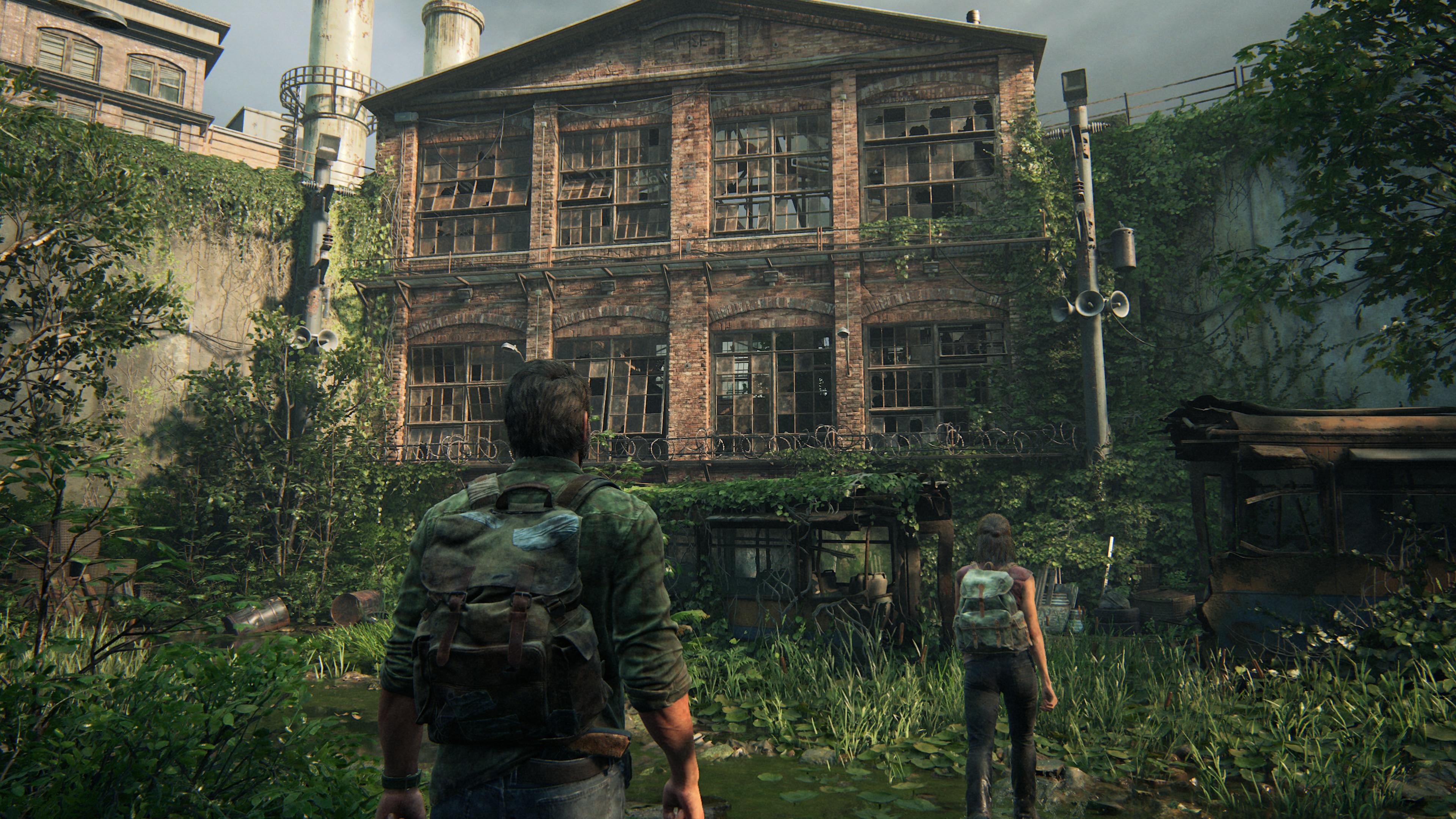
Ellie soon tricks Joel into revealing the meaning of the code, telling him when he wakes up that a song came on the radio while he was asleep, something that included the lyrics, “Wake me up before you go-go.” Joel freaks out before Ellie, apparently a WHAM! fan, reveals he’s been had. “Gotcha, code broken! ‘80s means trouble.” It’s another example of the show delivering information not for the benefit of the characters but for us, as this revelation will pay off for us in just a few minutes.
Tess returns from scouting out their escape route and it’s time to go. “Observe mandatory curfew to fight infection and insurrection,” a recorded message with some nice internal rhyme blares from FEDRA speakers, as the three sneak beyond the wall through an underground passageway. Unfortunately, before they’re clear of FEDRA’s surveillance, they encounter the very same officer who Joel hooked up with some pills earlier in the episode. (They’re stopped in the game, too, but there, it’s by a pair of anonymous FEDRA officers, not one Joel has a relationship with.) He orders them to get on their knees, and retrieves the same device we saw used on the boy in the show’s opening. Ellie looks terrified as he gets closer to her, the screen flashing green in response to Tess and then to Joel.
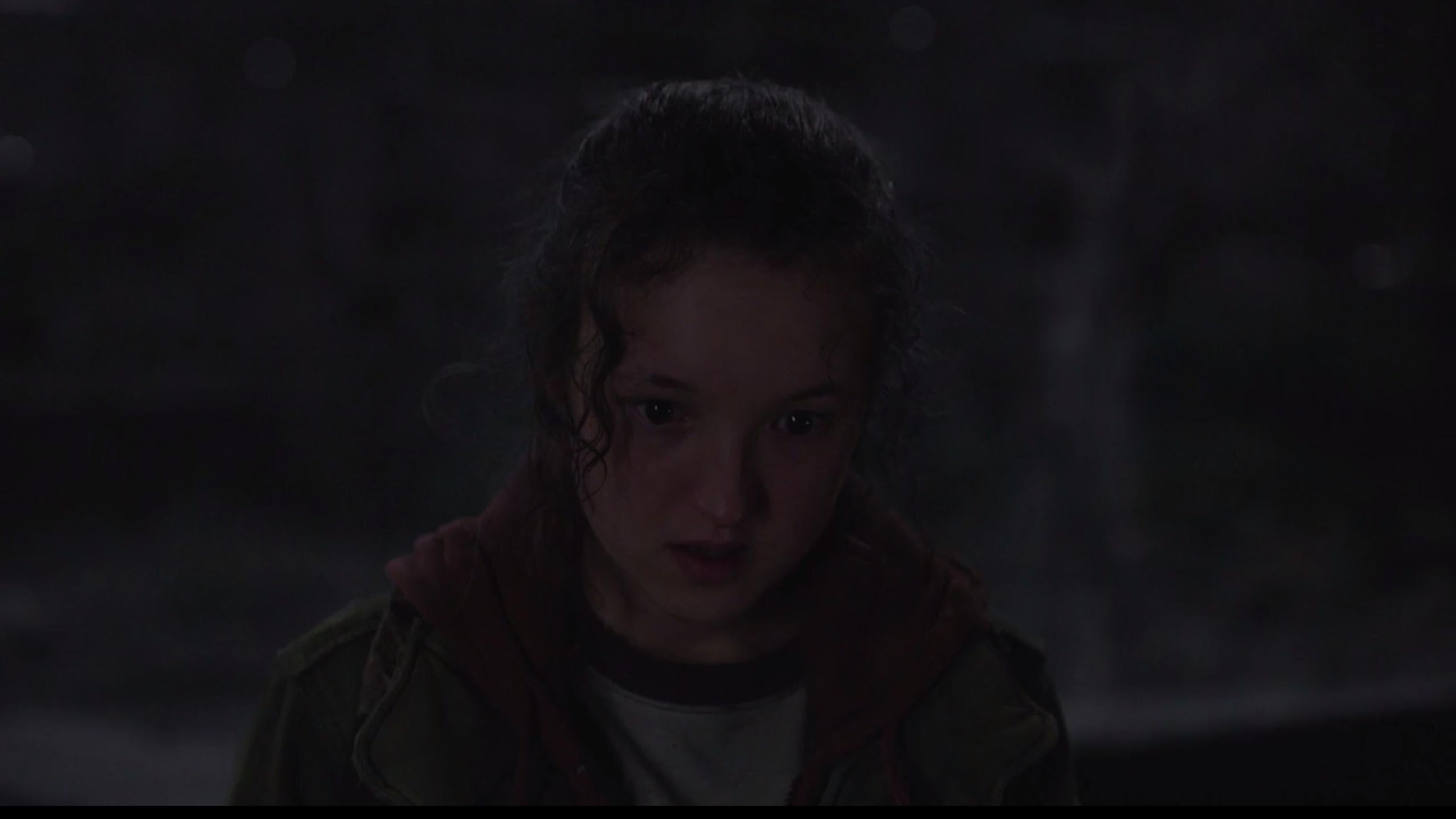
When he gets to her, she doesn’t even wait for the test result. She takes her switchblade and plunges it into his leg, and the officer turns his rifle on the group. In the game, Tess shoots the officers, but in an emotional association that’s wholly new for the HBO show, Joel, being held at gunpoint, flashes back to the soldier who killed Sarah and tried to kill him, before charging the FEDRA officer and beating him to death. It’s his first kill of the show, done with his bare hands, and because we’re not desensitised to it, it hits harder than the 15 or 20 kills Joel’s racked up by this point in the game. Making it all the more unnerving is the way Ellie looks on, not disgusted or horrified, but in some way excited by Joel’s willingness to go to such lengths to protect her.
And then we see it, the red screen on the device, the very same red screen we saw when that little boy couldn’t be saved. Tess cries out in alarm, and Ellie reveals her secret: she’s immune. The wound that infected her is three weeks old and mostly healed. Joel and Ellie may not be convinced, but there’s no time to discuss it. More FEDRA are approaching, so Joel grabs the officer’s gun and the three head through a nearby fence, into the biological contamination area beyond.

Meanwhile, back in Joel’s apartment, the radio crackles to life. The song, which the earlier conversation tells us is a signal from Bill and Frank, is “Never Let Me Down Again” by Depeche Mode. 1987. That means trouble, ending the episode on a note of foreboding. And, yes, a pretty great needle drop to go out on, as the lightning flashes and a leaning Boston skyscraper — one of the game’s most striking visuals — looms in the distance. (Is a show even prestige TV if it doesn’t have the occasional sick needle drop?)
One thing I miss in the TV version of these early goings are the stunning, vibrant greens we sometimes see in and around the game’s QZ. The game’s visual design makes you feel the natural reclamation of the world right from the beginning, as Joel and Tess traverse places lush with greenery and ruin. The early parts of the TV series don’t quite replicate that, and the contrast made me appreciate the game’s visual design that much more. But there’s a whole lot of wide-open landscape left for our heroes to cover, and the journey’s just getting started.
Were there any differences from the game you found particularly interesting or noteworthy? How are you feeling about the adaptation following the premiere? Let me know in the comments, and we’ll see you again next week.
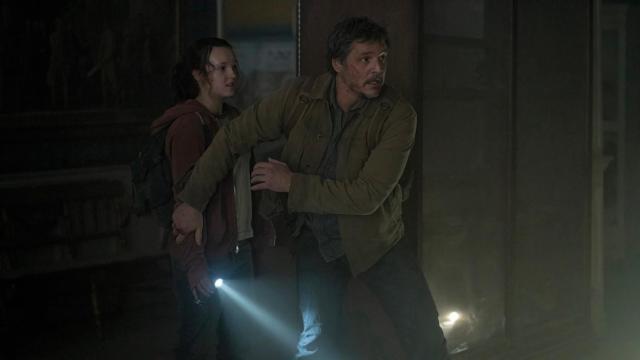
Leave a Reply